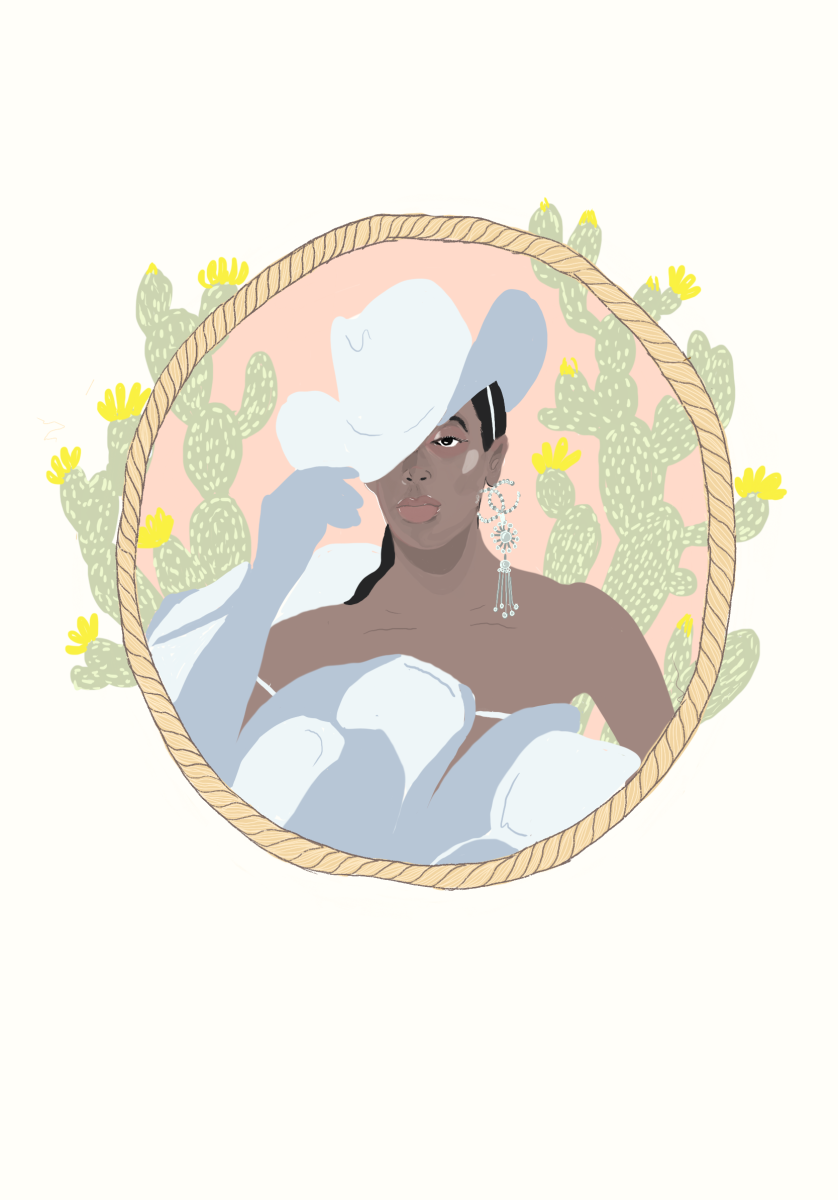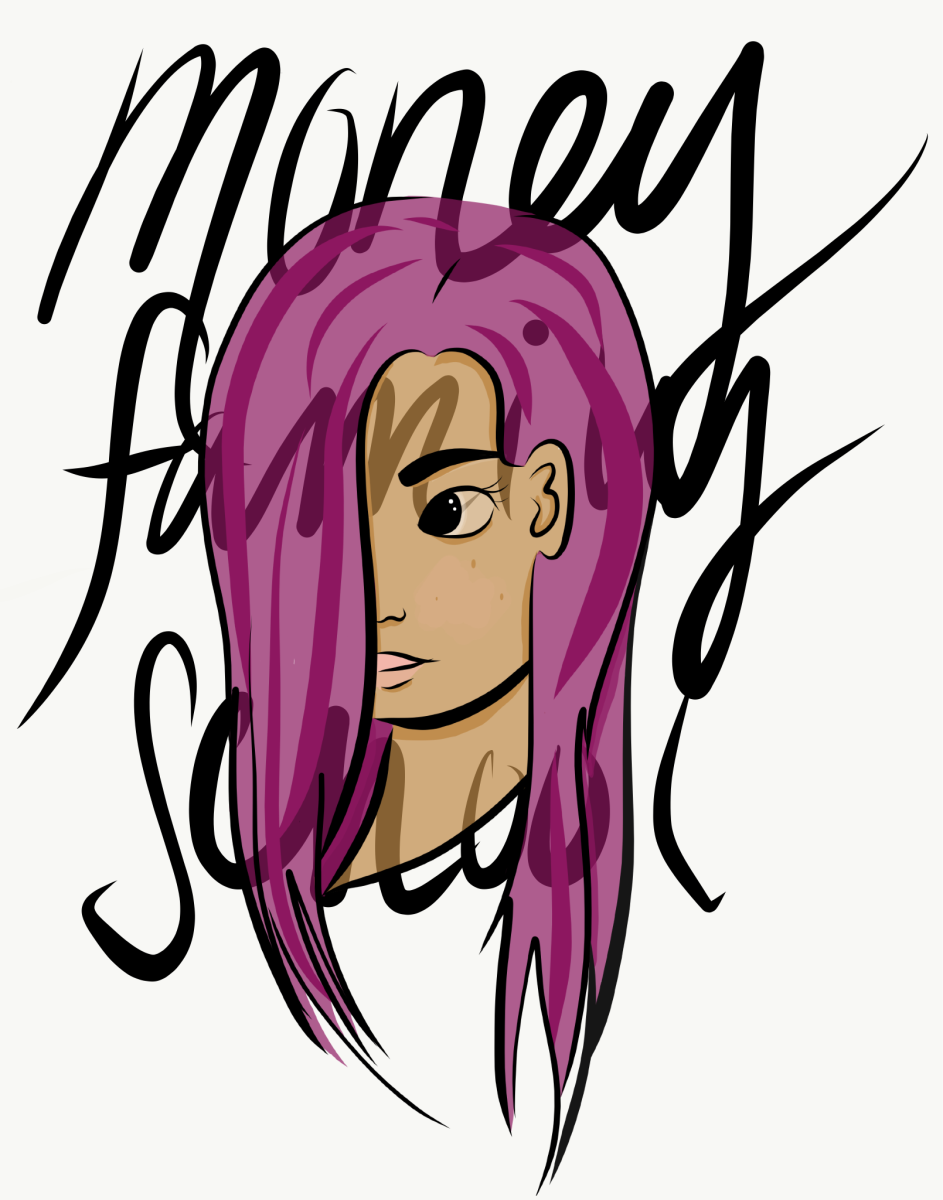The English word cowboy derives from the Spanish word “vaquero” which in turn derives from the Spanish word for cow or “vaca.” This derivative timeline of the etymology of the word cowboy is not merely a coincidence. The original cowboys were not in fact wild western white buccaneers as depicted in American classic films, but instead were native Mexicans forced to work on ranches when Spain invaded Mexico in the 16th century. In an article for The Atlantic, Leah Williams notes that “by the 19th century one in three cowboys were Mexican.” Therefore, it is quite curious why the first image that comes to mind for many people when regarding cowboys is white American film stars such as John Wayne or Clint Eastwood.
The iconography of the cowboy is as ingrained in associations with America as apple pie is. In the past the cowboy has meant many things: a loner, a rancher, a man of few words. Perhaps the cowboy still means all of those things. However, in the past few years the style of the cowboy has been littered all across media. In music, film, television, and art the cowboy has resurged from its dormancy and reclaimed its throne as an American staple of culture. What is more important about this resurgence of the cowboy is who is driving it. It is African-American musical artists such as Solange and Lil Nas X, queer country singer Orville Peck, and even Japanese-American singer-songwriter Mitski who named her most recent album “Be the Cowboy,” who are furthering this imagery back into the forefront of the general public’s minds. This reconnaissance of the cowboy is a reclamation of power. Everyone thought they knew what a cowboy is (re: tall, white, strong, and male), but these artists have shown a completely different side to the wild west character. The cowboy is no longer just for the John Waynes of the world. It is for everyone.
To understand why Lil Nas X’s and Solange’s reappropriation of the cowboy is so intrinsically important, in particular, one first needs to know and consider the history of black cowboys. It is reported that nearly one in four cowboys in America from the 17th to the 19th century were black. This is not widely known of course. When we think of representations of the cowboy on film we are littered with images of a rootin-tootin heavy duty horseback riders with a wicked smirk and anti-hero character arc. When we did see people of color on screen in western films from the 1940s, 50s, and even beyond we saw them as villains. Native Americans were shown as savages and Mexicans were shown as treacherous bandits. However, African-Americans were almost never in any western films. A great majority of cowboys in the south, and Texas, especially were in fact African slaves. It is a lesser known fact that while Texas ranchers fought in the civil war they left their slaves to take care of the ranches and fulfill cowboy duties which is noted by Katie Nodjimbadem in an article for the Smithsonian. African slaves were the backbone of ranches in the south, yet they are overshadowed and overlooked for glossy depictions of the self assured white cowboy. Additionally to tending to ranches, African-Americans also became some of the first popular rodeo cowboy stars as seen through the likes of Bill Pickett. It is confounding yet not surprising that although black people played a major proponent in the role and culture of the cowboy in history, they are instead surpassed in popularity by their white counterparts. Even though Solange and Lil Nas X may just be using cowboy imagery as purpose of posturing it is incredibly pertinent to note that their posturing is not simply a rehash of the white cowboy, but instead a defiant definitively black one.
One of Merriam-Webster’s definitions of a cowboy is “one having qualities (such as recklessness, aggressiveness, or independence) popularly associated with cowboys.” This definition of course takes into account what the popular depiction of a cowboy is i.e. male, white, and entitled to whatever he damn well pleases. One of the basic understandings of the cowboy is that he is free. This is of course not accurate as many historical cowboys were African slaves or Native Mexicans forced into work by the Spanish. However, this idea of a freewheeling, gun-slinging hero persists. Perhaps it is this depiction of the cowboy as the definitive white man that furthers this narrative. Cowboys are more than just straight white men.
One genre of music that has always drawn from the heteronormative ideals of the cowboy is of course country music. From the days of Hank Williams Jr. to artists on the current country charts the cowboy and the cowboy hat in particular have always been a mainstay. It is not a mystery that is extremely hard to be openly queer in this music scene. However, over the past year an alternative country artist named Orville Peck has emerged as a signifier of all things gay AND cowboy. Of course the gay cowboy has been shown famously in media in the 2005 Ang Lee film, Brokeback Mountain. However, other than that the association in mainstream media between queer life and the cowboy has been limited. Perhaps one recalls the cowboy character from the unabashedly queer band from the 1970s, the Village People. Despite this the cowboy has a sordid history with queer life. There are gay cowboy bars all across America. The cowboy as a gay sex icon has persisted through the likes of artist like Tom of Finland. Yet, while many gay men have subverted what it means to be a cowboy, mainstream media has rarely paid attention to these depictions. Orville Peck is a glowing example of what it means to be both openly gay and a cowboy in the modern sphere. Peck always wears a flamboyant fringed mask as well as queer actualizations of the cowboy costume on stage. In fact no one actually knows who he truly is. He also openly writes about his relationships with men, stories about drag queens, and is unashamed of his identity as a gay man in a heteronormative space such as country music. It is also important to note that Peck’s music recalls classic country music such as Loretta Lynn and Johnny Cash. Peck is a masterful pastiche of the cowboy. He is both within and without. By taking control of what it means to be a cowboy, Peck has circumvented the power from the straight white male cowboy right into his undeniably queer gaze.
As mentioned earlier, Mitski, a spectacular indie rock musician named her most recent record from 2018, “Be the Cowboy.” As a Japanese-American woman Mitski stated that she always felt she has little to no voice or space cultivated for her in society. The cowboy in turn represents exactly what Mitski wishes she could have, the power and freedom to do what she pleases. The cowboy represents macho power so purposefully tied to white male power by popular media that it frankly sickening. In a baffling, yet not shocking display of male privilege, fellow indie rocker Mac Demarco recently this year announced and released his latest record “Here Comes the Cowboy.” Demarco claimed he had not heard of Mitski’s record and that his record has nothing to do with hers. I find it hard to believe Demarco had not heard of Mitski’s record from 2018 when it was on countless lists as one of the best albums of the year and even topped NPR’s year end album round up. Additionally I find the wording of Mitski and Demarco’s respective albums interesting. Mitski’s album empowers those who are disenfranchised to seek power and space by a society that has denied them such. Demarco’s album title announces his deft arrival. Here he comes! It’s the privileged white man. Ultimately Mitski and Demarco both laughed this supposed coincidence off. However I do not find it funny. Mitski’s definition of the cowboy reveals the power of its imagery. Demarco reveals its privilege. The cowboy has evolved from its John Wayne heydays. The cowboy now belongs to everyone. The cowboy is no longer a lone ranger. The cowboy is you.










![[Photo Courtesy of the Lara Family]
Ruben embraces his beloved childhood goat, Katrina.](https://ethos.dailyemerald.com/wp-content/uploads/2025/05/katrina-1-1060x1200.jpg)


